Forrester’s research suggests that it is 5X more costly to acquire new customers than to retain existing ones.
Loyalty programs can help a business in several ways —from increasing customer retention, engagement, business revenue, and average order value to improving purchase frequency. The strategy behind each loyalty program is crucial in defining its success. Strategic planning helps businesses in decision-making at every stage of the loyalty program. Businesses with strong customer engagement strategies show 89% more customer retention.
Loyalty program strategies can differ depending on the goal, business model, and competitive standing. This blog highlights the importance of strategy in loyalty programs using examples.
Why is a Customer Loyalty Program Strategy Important?
Without proper planning, calculated decisions, and a step-by-step strategy to achieve the target, a loyalty program cannot achieve its goals. Strategizing can help brands identify the potential problems, risks, and scenarios that can impact a loyalty program in the future. In addition, it can help find solutions to tackle challenges that can arise.
The examples mentioned below give a better understanding of how strategies can cement a loyalty program’s success.
Top 3 Examples of Loyalty Program Strategy
1. Stride Rite
Stride Rite is a popular children’s footwear brand established in 1919.
Objective:
Stride Rite wanted to increase engagement, order value, and revenue with the help of a loyalty program. They also wanted to build a community of loyal customers.
Strategy:
Stride Rite followed a 360-degree engagement and community-building strategy in its loyalty program. The strategy was to reward customers for brand interactions, purchases, and referrals.
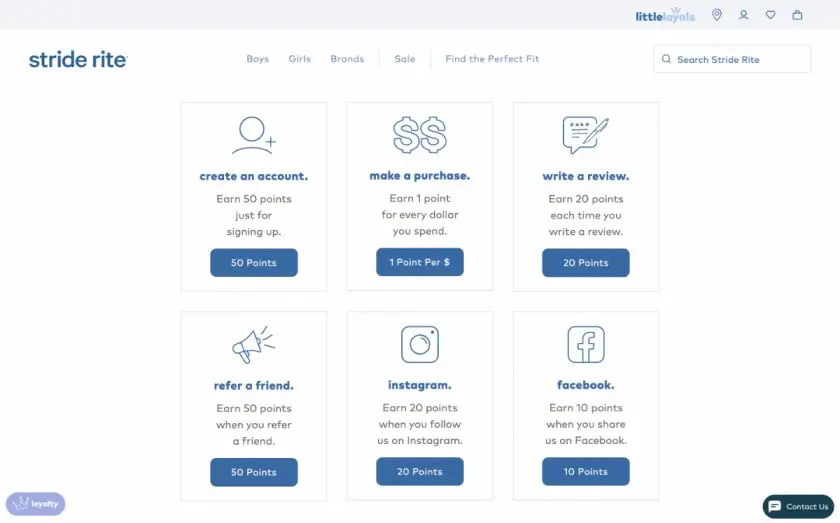
The loyalty program rewards points to members for regular interaction with the brand on their website or social media. Customers can get discounts for redeeming their points. For example, customers can use 300 points to get $20 off on their purchase. The program has a tiered structure, with members getting better rewards with higher tiers. Customers are motivated to earn better rewards. So, they make frequent purchases to reach higher tiers.
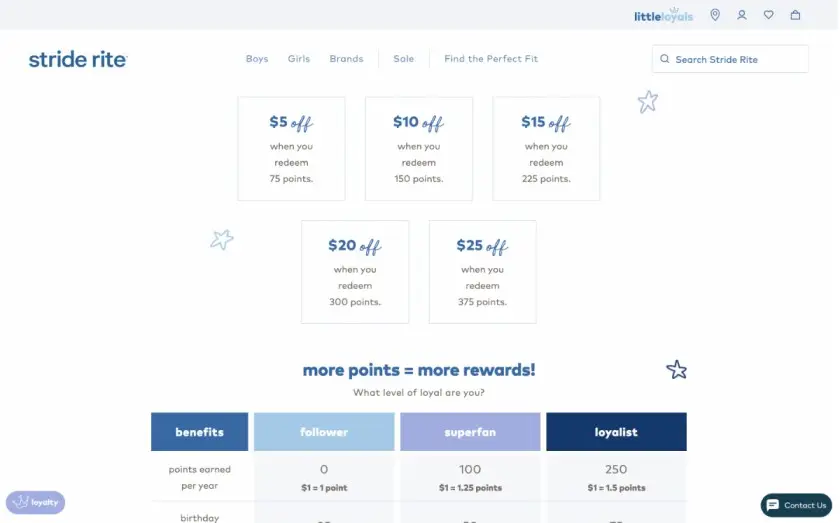
Highlights of the program include:
- Multiple engagement opportunities
- Attractive incentives
- Customer-centric approach
Results:
Stride Rite increased retention by 31%, average order value by 25.29%, and revenue per member by 43.01%.
Customers who wanted to reach higher tiers performed more transactions with Stride Rite. This helped in increasing the average order value and revenue. Offering referral rewards helped Stride Rite increase its reach and attract more customers. Using discounts for point redemption also acted in the brand’s favor. This is because customers are more likely to purchase if they get discounts.
2. Chromatic Coffee
Based in Santa Clara, Chromatic Coffee prides itself on its carefully sourced, crafted, and roasted coffee. Over the years, the brand has won many accolades and 5-star reviews on multiple platforms.
Objective:
The objective of creating the Chromatic Rewards Program was to increase customer retention and repeat purchases.
Strategy:
Chromatic Coffee partnered with Zinrelo to create an optimized loyalty program. The strategy included incentivizing customers to make frequent purchases. Chromatic Coffee utilized point-based promotions instead of cash discounts to increase repeat purchases. Customers can exchange their accrued points for various exciting rewards – Chromatic Coffee swag, Single Origin Bag, and Latte Art Classes.
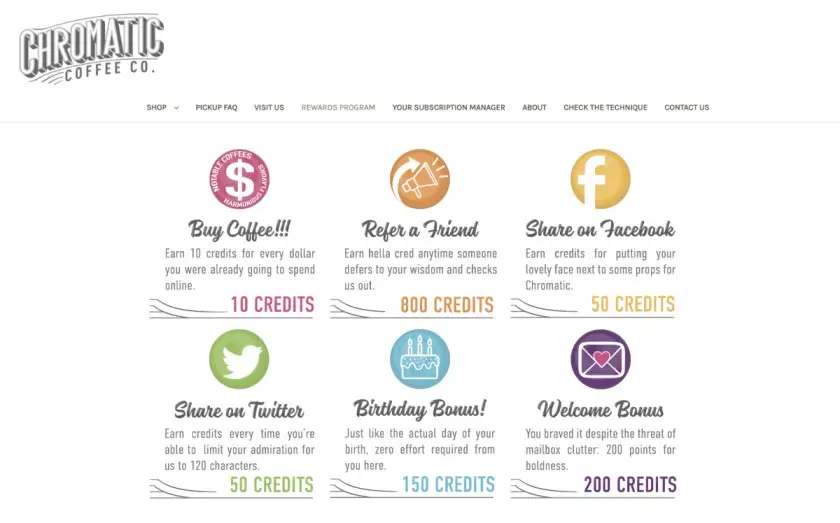
The tiered structure of the Chromatic Rewards programs was designed to promote engagement. The rewards at each tier encouraged customers to reach the highest tier for amazing rewards.
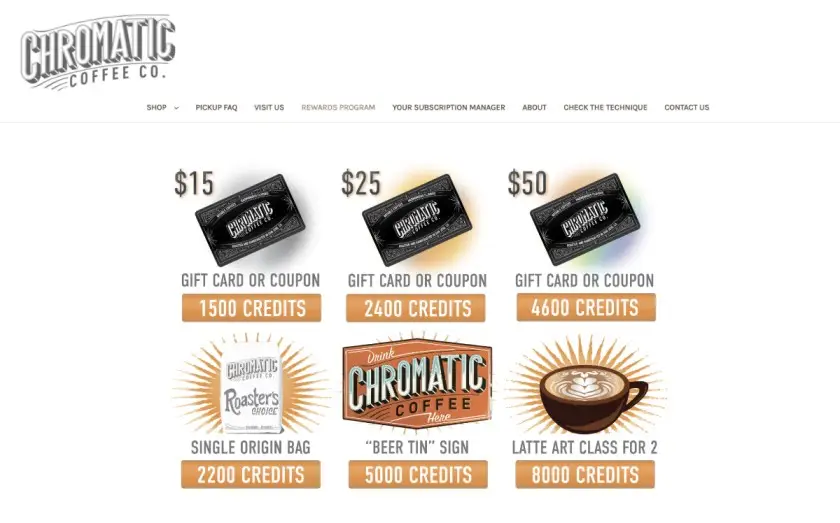
Highlights of the program include:
- Unconventional rewards like Chromatic Coffee Swag, Single Origin Bag, etc.
- Improved engagement with a tiered structure
- Multiple point-earning opportunities
Results:
84.83% increase in customer retention and 84.06% in repeat purchase revenues.
The strategy of offering unconventional benefits like the Chromatic Coffee Swag and Latte Art Class gave Chromatic Rewards a unique touch. As a result, the rewards played a massive role in the loyalty program’s success. Silver, gold, and chromatic tiers also added a competitive aspect to the loyalty program. This helped Chromatic Coffee to increase engagement and repeat purchases.
3. LAFCO
Founded in 1992, LAFCO combines traditional craftsmanship and the purest ingredients to create luxurious home fragrances and personal care products.
Objective:
LAFCO aimed to improve customer retention and increase repeat purchase revenue with the loyalty program.
Strategy:
The strategy behind the loyalty program was to promote customer engagement, which increased purchase frequency. To ensure 360-degree customer engagement, LAFCO offered various opportunities for members to earn rewards. These opportunities included purchases made on the website, referrals, birthday bonuses, welcome bonuses, and sharing on social media.
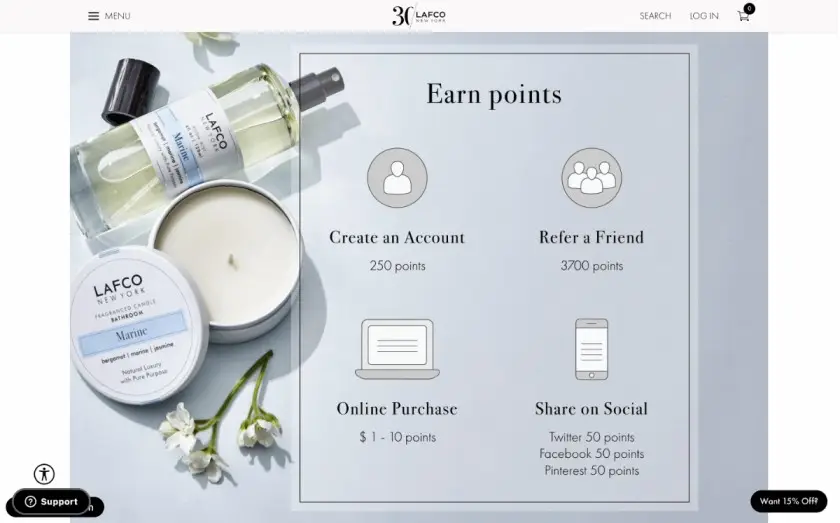
Members can redeem accumulated points for attractive rewards like discount coupons, free shipping, and free products. LAFCO created stronger relationships with customers using targeted email campaigns and customized promotions. The brand actively collected customer data to enhance customer service and display better recommendations to members. The program also has different tiers based on customer segmentation.
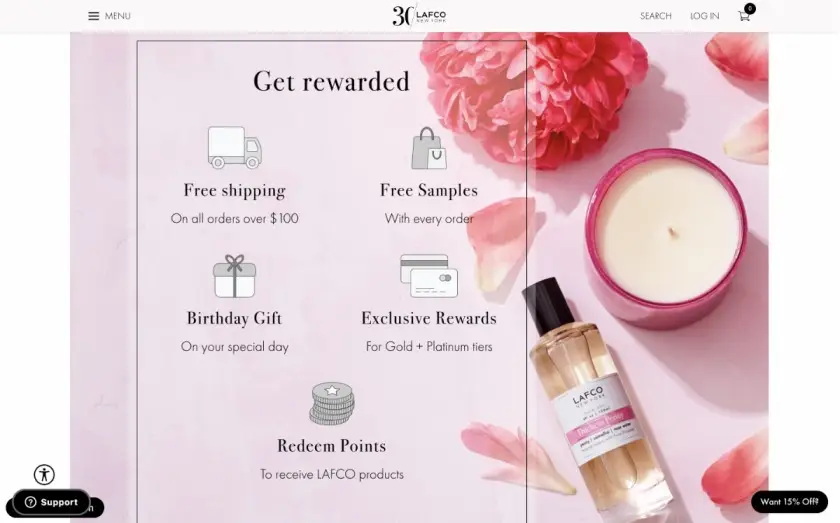
Highlights of the loyalty program include:
- Data-centric approach
- Personalized incentives
- 360-degree engagement
Results:
LAFCO saw a 26.72% increase in customer retention and a 23.39% increase in repeat purchase revenue.
The data-centric strategy was a massive factor in the loyalty program’s success. The attractive rewards and targeted campaigns also ensured frequent customer engagement. In addition, collecting customer data helped LAFCO to provide better incentives and service to program members.
Customer Loyalty Strategies: Conclusion
Strategies backed with relevant data can immensely improve the success rate of a loyalty program. Today, data is the new oil for marketers, and to achieve revenue goals, data-driven marketing is the key. Loyalty programs enable brands to collect zero and first-party data empowering brands to work with the highest quality data. In the above examples, each loyalty program had a different strategy to address the challenges faced by brands.
Strategies alone cannot make a difference; timely execution and monitoring the progress also play a very important role. Zinrelo stands out from other loyalty platforms with its unique offerings: a robust & secure technology platform, data sciences & analytics, and strategic consultations.
Ready to Build Your Loyalty Program With Zinrelo?
Learn how our holistic loyalty platform can transform your business.
![How to Create Customer Loyalty Program Strategy That Deliver Results [With Examples] featured image](https://www.zinrelo.com/wp-content/uploads/2024/09/Importance-of-strategy-in-loyalty-programs.webp)

